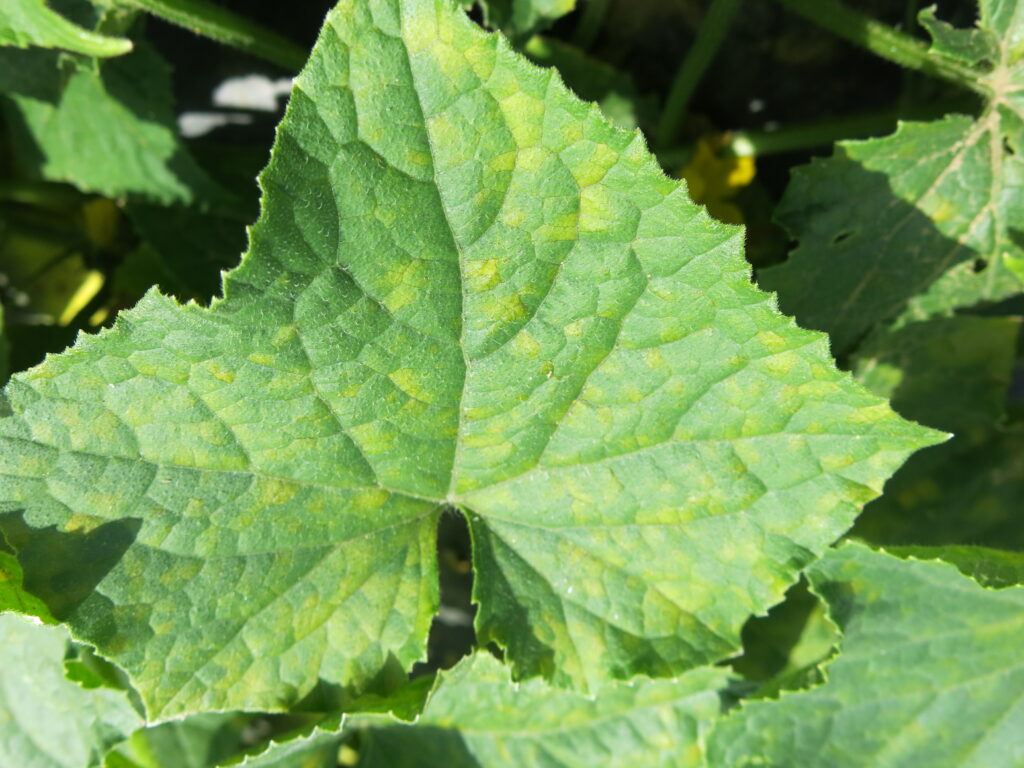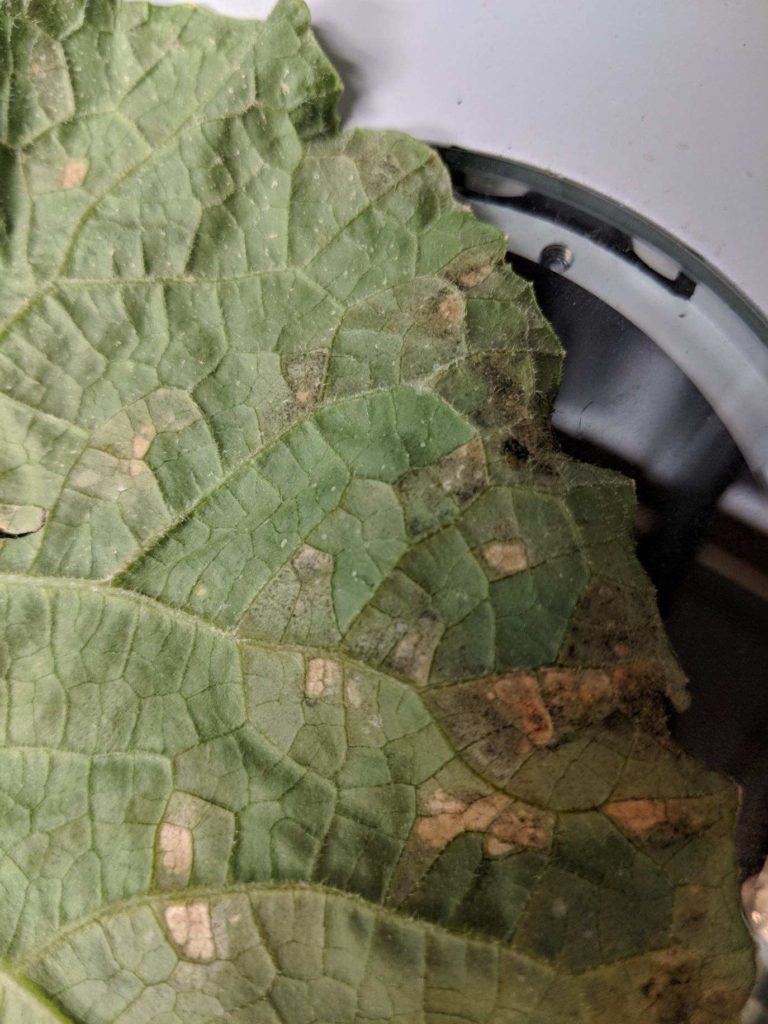Cucurbit Downy Mildew Confirmed in Western NC, July 28, 2021
go.ncsu.edu/readext?811477
en Español / em Português
El inglés es el idioma de control de esta página. En la medida en que haya algún conflicto entre la traducción al inglés y la traducción, el inglés prevalece.
Al hacer clic en el enlace de traducción se activa un servicio de traducción gratuito para convertir la página al español. Al igual que con cualquier traducción por Internet, la conversión no es sensible al contexto y puede que no traduzca el texto en su significado original. NC State Extension no garantiza la exactitud del texto traducido. Por favor, tenga en cuenta que algunas aplicaciones y/o servicios pueden no funcionar como se espera cuando se traducen.
Português
Inglês é o idioma de controle desta página. Na medida que haja algum conflito entre o texto original em Inglês e a tradução, o Inglês prevalece.
Ao clicar no link de tradução, um serviço gratuito de tradução será ativado para converter a página para o Português. Como em qualquer tradução pela internet, a conversão não é sensivel ao contexto e pode não ocorrer a tradução para o significado orginal. O serviço de Extensão da Carolina do Norte (NC State Extension) não garante a exatidão do texto traduzido. Por favor, observe que algumas funções ou serviços podem não funcionar como esperado após a tradução.
English
English is the controlling language of this page. To the extent there is any conflict between the English text and the translation, English controls.
Clicking on the translation link activates a free translation service to convert the page to Spanish. As with any Internet translation, the conversion is not context-sensitive and may not translate the text to its original meaning. NC State Extension does not guarantee the accuracy of the translated text. Please note that some applications and/or services may not function as expected when translated.
Collapse ▲Cucumber downy mildew (CDM) has been confirmed on cucumber plant samples from a commercial grower in Haywood County, NC. Approximately 75-100% of plants were affected. Leaves showed symptoms typical of CDM: angular, chlorotic or yellow lesions on the upper surface of the leaves with gray to black spores on the underside of the leaf.
UPDATE (Aug 3, 2021): Downy mildew has been found on cucumber and canteloupe in sentinel plots in Haywood County, NC and on a commercial farm in Henderson County.
Growers in western NC are advised to implement management strategies. Effective fungicides can be found in the Southeastern US Vegetable Crop Handbook. More information can be found on the cucurbit downy mildew disease fact sheet.
This pathogen can rapidly become resistant to fungicides so, it is important to rotate fungicide groups and use tank mixes with protectants to minimize the risk of fungicide resistance.
Cucumbers and cantaloupes are generally more susceptible to the disease than squash, watermelon, and pumpkin. Because this pathogen travels through air currents, it can spread rapidly. Therefore, it is important that growers report outbreaks so other growers in the area can implement management strategies.
You can track the spread of CDM and report outbreaks anonymously on the Cucurbit Downy Mildew IPM PIPE (CDM ipmPIPE). If you see symptoms of CDM in your cucurbits, please notify your local Extension Agent to assist in diagnosis and to help you send a sample to the Plant Disease and Insect Clinic.




